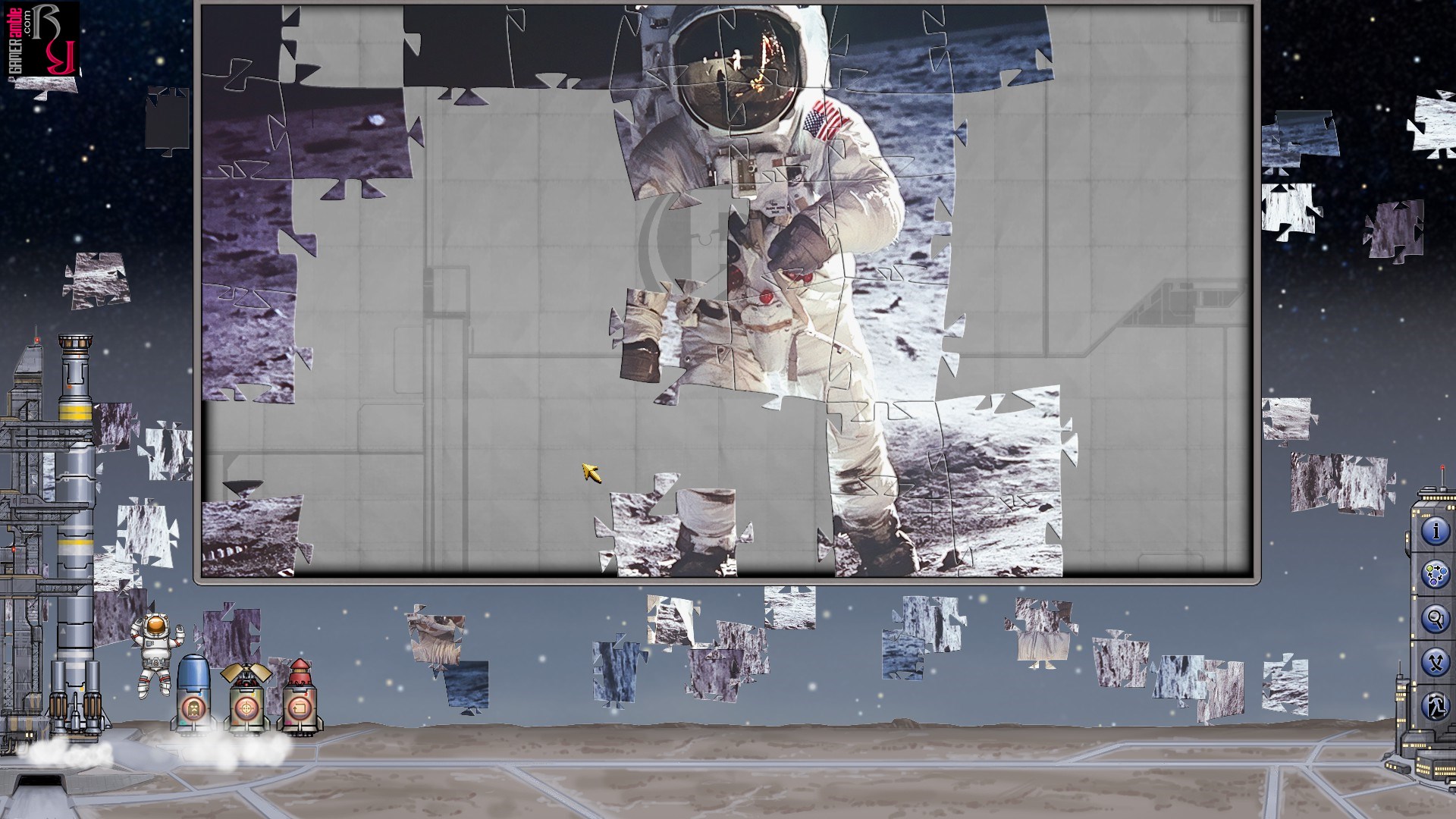Pixel Puzzles 2: Space
Developer: Decaying Logic | Publisher: KISS ltd | Release Date: 2016 | Genre: Casual / Indie / Simulation / Strategy | Website: Official Website | Purchase: Steam
Space; the final frontier, a place where nobody can hear you scream and now also the latest theme for the popular Pixel Puzzles series by Decaying Logic. Those unfamiliar with the series, which has thus far featured Japan, zombies, birds, and anime will find that it is a traditional jigsaw puzzle game in a convenient digital format. This means it can be enjoyed without the risk of losing pieces to pets or small children and you don’t have to sacrifice any of the table space in your house until a puzzle is complete.
One of the great things about the Pixel Puzzles series is the fact that the developers have constantly been refining and improving the formula based on fan feedback. This is very evident in this latest installment which, in our opinion, features the best interface yet. The puzzle board is now aligned with the top of the screen while there is a permanent sorting shelf at the bottom. The puzzle pieces still float around the board, but the space is used in a much more efficient manner, which results in less clutter. The result is that the interface not only looks better, but it is more accessible as well.
Pixel Puzzles 2: Space features 25 different puzzles to complete and, as the name suggests, these are all related to space. The images of planets, astronauts and other space related objects all make for very interesting puzzles. Puzzles range in size from 60 to 350 pieces and like the previous games all of them feature some very unusual shapes. The weirdly shaped pieces definitely makes completing the puzzles a bit more challenging, but the option to play with plain, ordinary pieces would have been appreciated. We are happy to report though that all twenty five puzzles are accessible right off the bat, so you don’t need to unlock anything. Add to this the fact that the game auto saves each puzzle upon exit and you are free to jump around completing them in any order without losing any progress.
Completing puzzles is as easy as dragging the pieces floating around the board and placing them on the correct spot on the board. Pieces automatically snap into place when dropped close to where they belong, but you don’t have the advantages of looking at the box cover for reference. Instead you can turn to power-ups for some assistance by either briefly flashing the puzzle image on the screen, highlighting the placement of a piece or rotating your current piece to the correct orientation. Past entries in the Pixel Puzzles series required you to jump through a few hoops to make use of these power-ups, but no more. Now there are rocket payloads floating around with the puzzle pieces and these can be dragged into the power-up launchers for activation.
The catch is that the rocket payloads can also be dragged to the rocket platform on the left side of the screen. Doing this instead completes the rocket and launches it, which rewards you with an additional achievement upon completing the puzzle. It also ensures that unless you really don’t care about Steam achievements you’ll try a little bit harder before using a power-up.
The Pixel Puzzle titles are known for having some type of mascot character roaming around the boards and this time it is a tiny, bouncing astronaut. The developers have also learned from previous installments that not everyone enjoys these type of distractions while playing, so you can actually grab the astronaut and drop him from a great height to stop him moving about. Having a permanent shelf at the bottom of the screen to keep selected pieces stationary is very useful and the developers even included the ability to turn off puzzle piece rotation in the latest patch. Not having to rotate the pieces obviously makes solving the puzzles a lot easier, which can make the game more appealing for novices.
Video options are still restricted to selecting the window size or playing in fullscreen, enabling or disabling V-sync and toggling “HD Mode” on or off, but since this is a casual title there really isn’t need for much more. There is also a slider for setting the audio volume, but the tranquil background music is a perfect fit for the space theme of the game. Control is handled with a mouse, while hot-keys take care of activating power-ups.
For fans of the Pixel Puzzles series this is another must-have entry and it is also a great place for newcomers to start. While the changes to the interface are not revolutionary they definitely enhance the playing experience and the game retains the fun and addictiveness of its predecessors.
System Requirements
- OS: Windows 7, Vista, 8.1
- Processor: Intel® Core 2 Duo
- Memory: 2 GB RAM
- Graphics: DirectX 9.0 Compatible
- Storage: 250 MB available space
- Sound Card: Generic Sound Device
- OS: Windows 7, Vista, 8.1
- Processor: Intel® Quad Core
- Memory: 4 GB RAM
- Graphics: DirectX 9.0 Compatible
- Storage: 250 MB available space
- Sound Card: Generic Sound Device

















Sammy February 25, 2016
The puzzle games used to be so simple. Not anymore. Can’t wait to play it!
Sammy February 25, 2016
I just hope this game
will run on my machine.